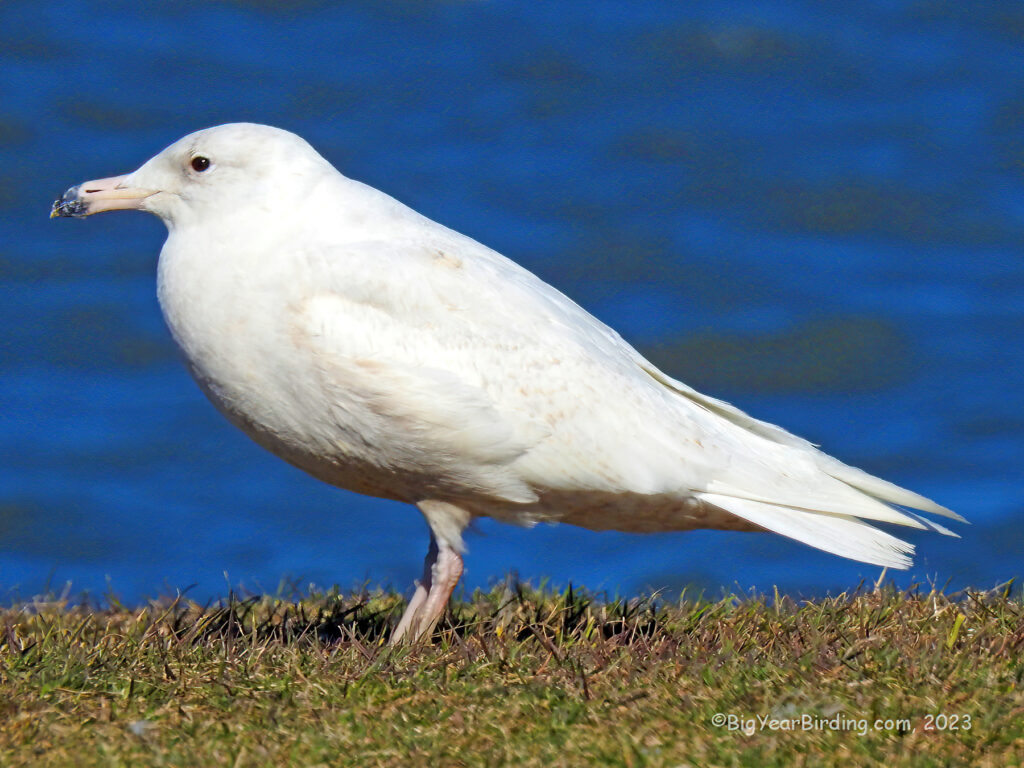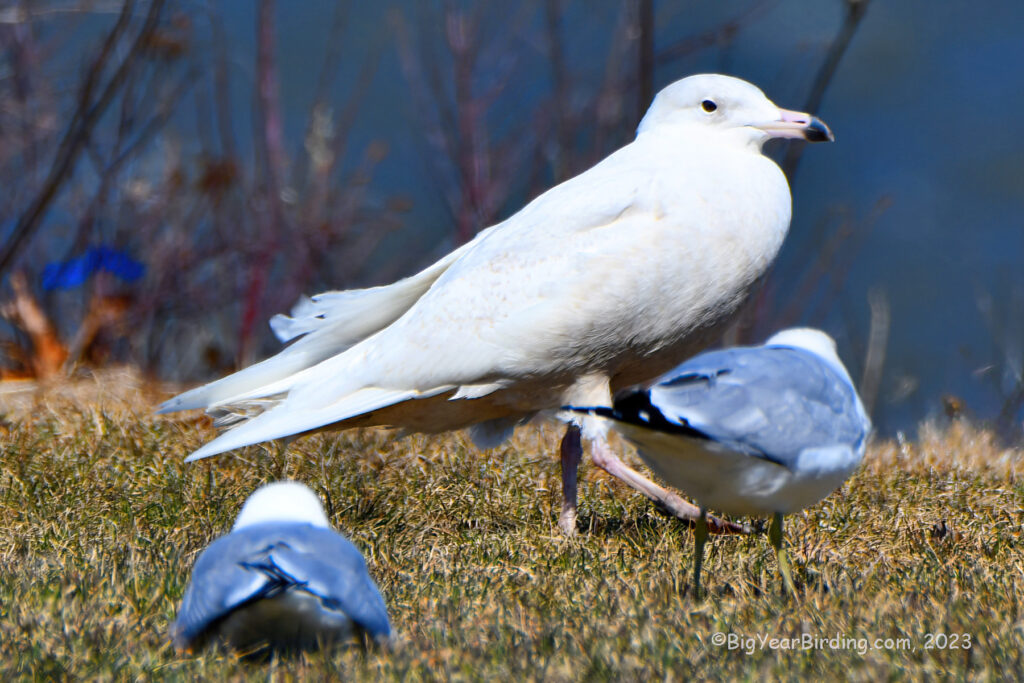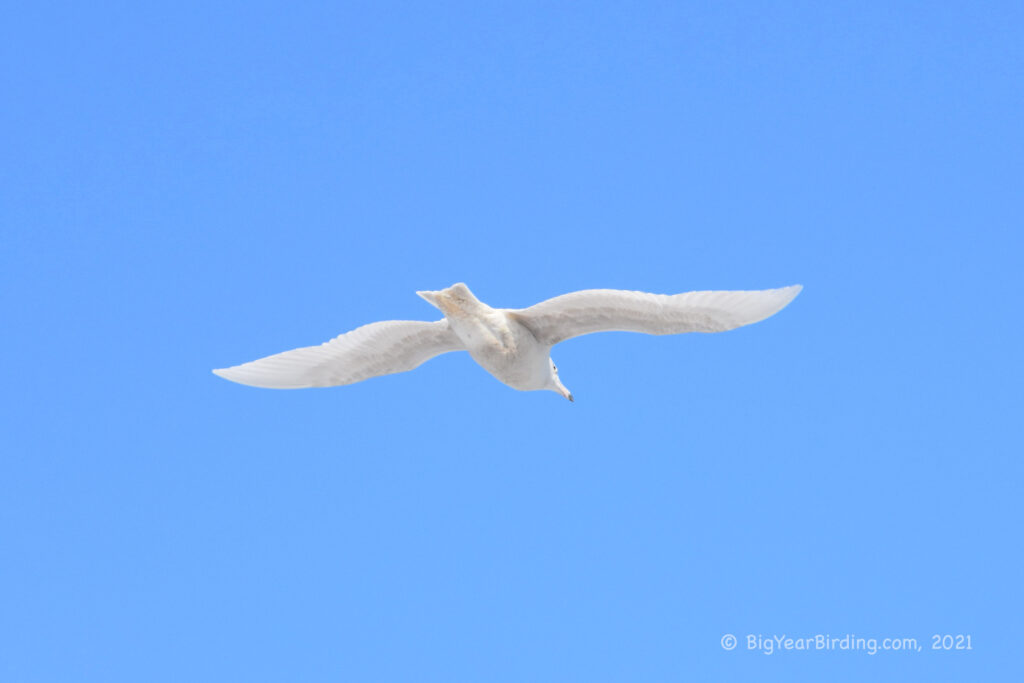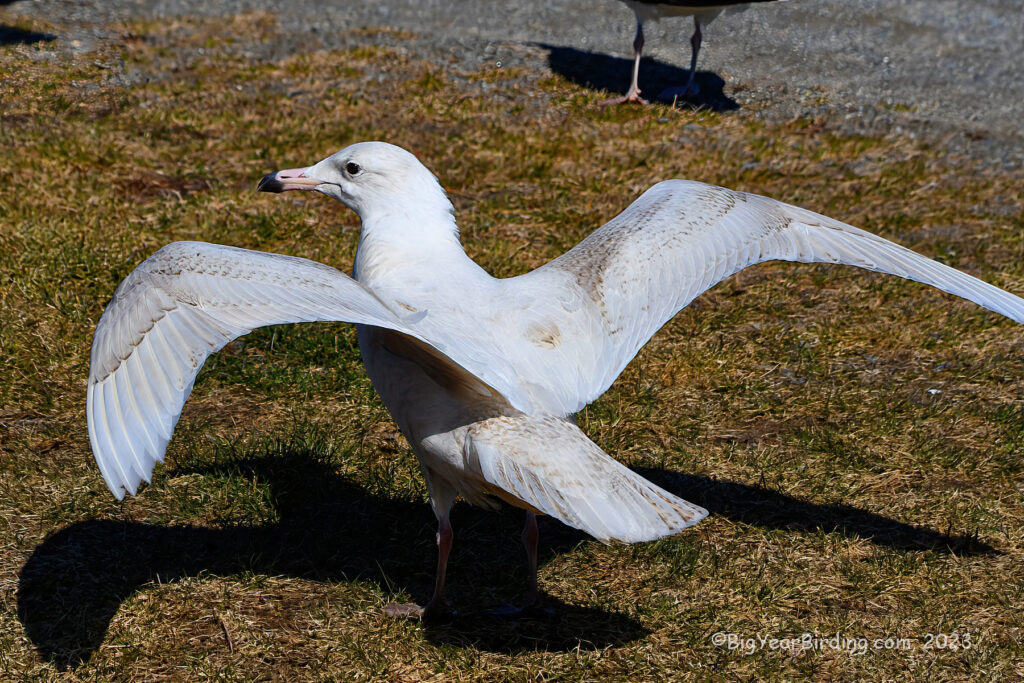
The Glaucous Gull (Larus hyperboreus) is a large seabird that is found in the northern regions of the world. It is known for its impressive size and striking appearance, making it a favorite among bird watchers and wildlife enthusiasts. The Glaucous Gull measures between 27 and 30 inches in length and has a wingspan of up to 65 inches. It typically weighs between 3.5 and 6.6 pounds, with males being slightly larger than females.

The Glaucous Gull is easy to identify due to its distinctive field markings. It has a white head, neck, and underparts, with gray-brown wings and back. Its beak is yellow with a red spot on the lower mandible, and its legs are pink. Juvenile birds are darker in color, with mottled brown feathers on their wings and back. As they mature, their feathers gradually become lighter until they reach their characteristic white and gray-brown plumage.
The Glaucous Gull is a migratory bird, with populations breeding in the Arctic regions of North America and Eurasia. During the winter months, it can be found along the coasts and inland waterways of North America, Europe, and Asia. It is a hardy bird and is often seen in harsh, cold environments such as ice floes and frozen coastlines.
The diet of the Glaucous Gull consists of a wide variety of food sources, including fish, crustaceans, mollusks, and even small mammals and birds. It is a opportunistic feeder, and will scavenge for food whenever possible. It is known for its aggressive behavior, and will often steal food from other birds, including smaller gulls.

Despite its impressive size and striking appearance, the Glaucous Gull is facing a number of threats. Climate change and habitat destruction are leading to declines in its population, and it is considered a vulnerable species in many regions. Efforts are being made to protect and conserve this magnificent bird, and it is hoped that with continued conservation efforts, its population will recover and thrive in the years to come.
